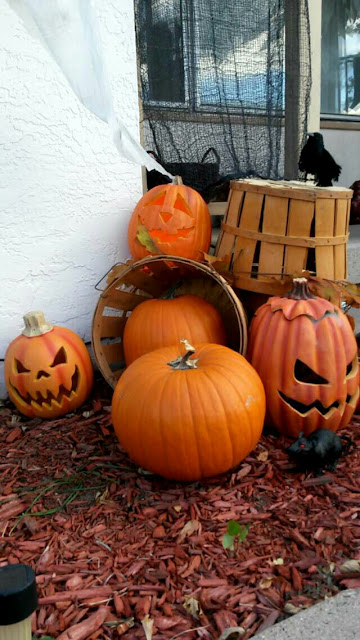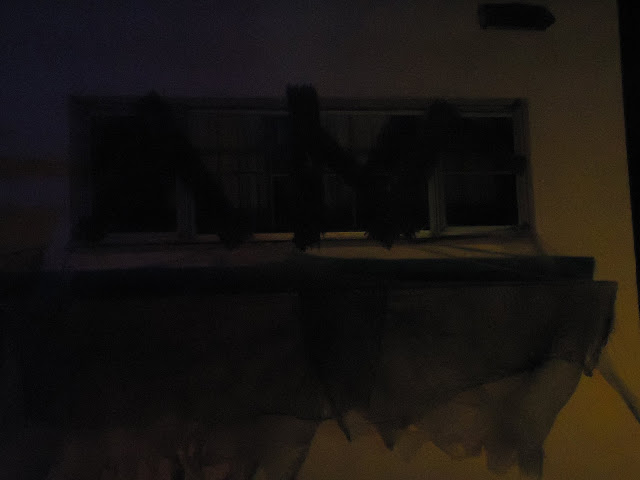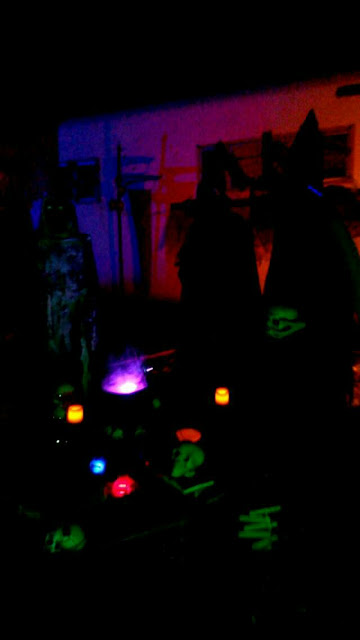In her examination of Bonfire Night, which occurs on the fifth of November in Newfoundland, Catherine Schwoeffermann explains how this annual festival, which is eagerly anticipated, is a significant communal affair: the preparation process unites family and community members with a single goal; the event gives adults a break from the toils of the workweek and children a respite from schoolwork; and the social nature of the occasion draws the public together, rekindling old friendships, forging newer connections, and encouraging the interactions of all townsfolk from every age range and socioeconomic status.[1] It is this collectivity, Schwoeffermann contends, which makes Bonfire Night and other public celebrations – Halloween among them – a vital element in the strengthening of communal networks and the promotion of intergenerational and interracial bonds. Indeed, scholars such as Lesley Pratt Bannatyne and Michael Taft attest to the cohesiveness and continuity encompassing these civic events, arguing that, unlike the family-centered festivities which constitute the majority of our holidays, Halloween holds a distinct public component, with members of communities throughout the nations that celebrate some variation of the holiday decorating their homes and businesses and welcoming costume-clad strangers with treats and toys.[2] As Mickie Mueller highlights, though, the social nature of Halloween has experienced a disheartening decline over the past several decades. By the 1980s, rumors of tampered candy and the myth of the Halloween sadist, fed by the Chicago Tylenol murders of 1982, eroded the community-wide trust of Halloween and stoked parental fears that prompted the deterioration of trick-or-treating and the prohibition of Halloween itself in several towns.[3] In an effort to save Halloween, individuals like Leonard Ashley propose communities ban together to create public havens which can alleviate safety concerns as well as reestablish and reinforce the communal connections associated with the event. The reading of Halloween-themed stories and poems at libraries, the display of child-created Halloween artwork in stores and other public venues, Halloween festivals at high schools and colleges, and the performance of Halloween plays and skits at local theaters can all, Ashley stresses, incorporate the creative works of the township and “build community spirit and goodwill at Halloween.”[4]
Works Referenced
Ashley, Leonard. Halloween: Everything Important about the Most Popular Secular Holiday. Bloomington, IN: Xlibris, 2012.
Bannatyne, Lesley. Halloween: An American Holiday, and American History. Gretna, LA: Pelican Publishing Company, Inc., 1990.
Mueller, Mickie. Llewellyn’s Little Book of Halloween. Woodbury, MN: Llewellyn Publications, 2018.
Schwoeffermann, Catherine. “Bonfire Night in Brigus, Newfoundland.” Halloween and Other Festrivals of Death and Life. Ed. Jack Santino. Knoxville, TN: University of Tennessee Press, 1994. 62-81.
Taft, Michael. “Adult Halloween Celebrations on the Canadian Prairie.” Halloween and Other Festivals of Death and Life. Ed. Jack Santino. Knoxville, TN: University of Tennessee Press, 1994. 152-169.
____________________
[1] Schwoeffermann, 63-64.
[2] Taft, 164; Bannatyne, 124.
[3] Mueller, 32-34.
[4] Ashley, 358-359.

With my parents’ fiftieth wedding anniversary in November of 2018, my ability to participate in Halloween festivities were limited that year, with Haunted Hill left eerily abandoned and the small number of builds I did manage to create focused primarily on decorating my office for the company’s annual decorating competition. I was, though, able to partake in a Halloween tradition which I had not participated in since my early teens: trick-or-treating. With nostalgia in mind, the space normally dedicated to the previous year’s haunt has been inhabited by the ghosts of Halloweens past. For this week’s post, we travel back to 2014 – a time when my little brother and I united for the first time since we moved out of our parents' house to haunt his home. Although I managed to create a few props (the candle pillars, trash bag creepy cloth, and withered boards), work schedules limited the number of builds and made us rely more on store-bought items. Sadly, few pictures exist of the haunt itself, since much of the time was spent erecting the display and reminiscing.










Arthur Guiterman experienced a prosperous literary career, publishing sixteen collections of poetry, serving as editor of the Woman’s Home Companion and the Literary Digest, and cofounding the Poetry Society of America.[1] Known for his amusing compositions, the poet released his fifth anthology of work, Ballads of Old New York, in 1920, which contains the poem “Hallowe’en Charm,” a fanciful text that blends the author’s playfulness with the mysticism of Halloween night.
Fern seed, hemp seed, water of the well,
Bark of wizard hazel-wand, berry of the bay,
Let the fairy gifts of you mingle with the spell,
Guard the precious life and soul of him that's far away!
Oak slip, thorn slip, crystal of the dew,
Morsel of his native earth, shoot of mountain pine,
Lend his arm the strength of you, let his eye be true,
Send him like the thunderbolt to break the foeman's line!
Rose leaf, elm leaf, kernel of the wheat,
Airy waft of thistledown, feather of the wren,
Bring him peace and happiness, let his dream be sweet,
Take my secret thought to him and call him home again![2]
Works Referenced
Guiterman, Arthur. “Hallowe’en Charm.” Ballads of Old New York. New York: Harper and Brothers, 1920. 125.
Kunitz, Stanley. Twentieth Century Authors: A Biographical Dictionary of Modern Literature. New York: H. W. Wilson, 1955.
____________________
[1] Kunitz, 394-396.
[2] Guiterman, 125.
With my parents’ fiftieth wedding anniversary in November of 2018, my ability to participate in Halloween festivities were limited that year, with Haunted Hill left eerily abandoned and the small number of builds I did manage to create focused primarily on decorating my office for the company’s annual decorating competition. I was, though, able to partake in a Halloween tradition which I had not participated in since my early teens: trick-or-treating. With nostalgia in mind, the space normally dedicated to the previous year’s haunt has been inhabited by the ghosts of Halloweens past. For this week’s post, we travel back to 2012 – a time when I spent each Halloween haunting the yard of a different friend and my studies in graduate school prevented me from building, which produced a haunt heavy with store-bought props.








